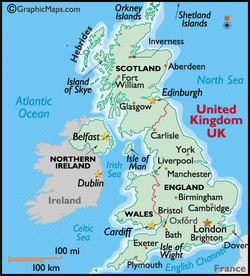SETTLEMENT PATTERNS
The modern landscape of the UK, especially England, has been greatly affected by the centuries of people that have lived there. The original wilderness is gone from the majority of the country, but can still be found in remote areas like mountaintops and moorlands. The oldest traces of exploitation of the landscape are antiquarian survivals, such as the Bronze Age forts in the southwest and corrugation left from strip farming during medieval times. The structure of settlement was established during Roman-British and Anglo-Saxon times has persisted as the basic pattern. People lived in high-density villages or towns, and now, cities. Since the 19th and 20th centuries, the government, along with other groups, have been trying to preserve its 'natural beauty'. From the National Trust in 1895 to the Civic Trust in 1957, hundreds of local societies, voluntary organizations and government agencies have and still are trying to protect and preserve the British landscape. Now, there is some natural beauty and farmland left, inspiring a lot of British literature and art. (Britannica) The high population and population density have meant large cities appearing all over the UK. These cities have 'taken over' a lot of the natural farmland used for agriculture in the past. Agriculture used to be a very large part of the economy of theUK, but is now being replaced by the industries of all the new booming cities. The main city in the UK is currently London, which is also the capital. It has the largest population, and is located in the greater London area. Other large current day cities include Birmingham in the West Midlands, Glasgow in Scotland, Liverpool in Northwest England, Leeds and Sheffield in Yorkshire and the Humber, Edinburgh in Scotland, Bristol in Southwest England, and Manchester in Northwest England. (Wikipedia)

